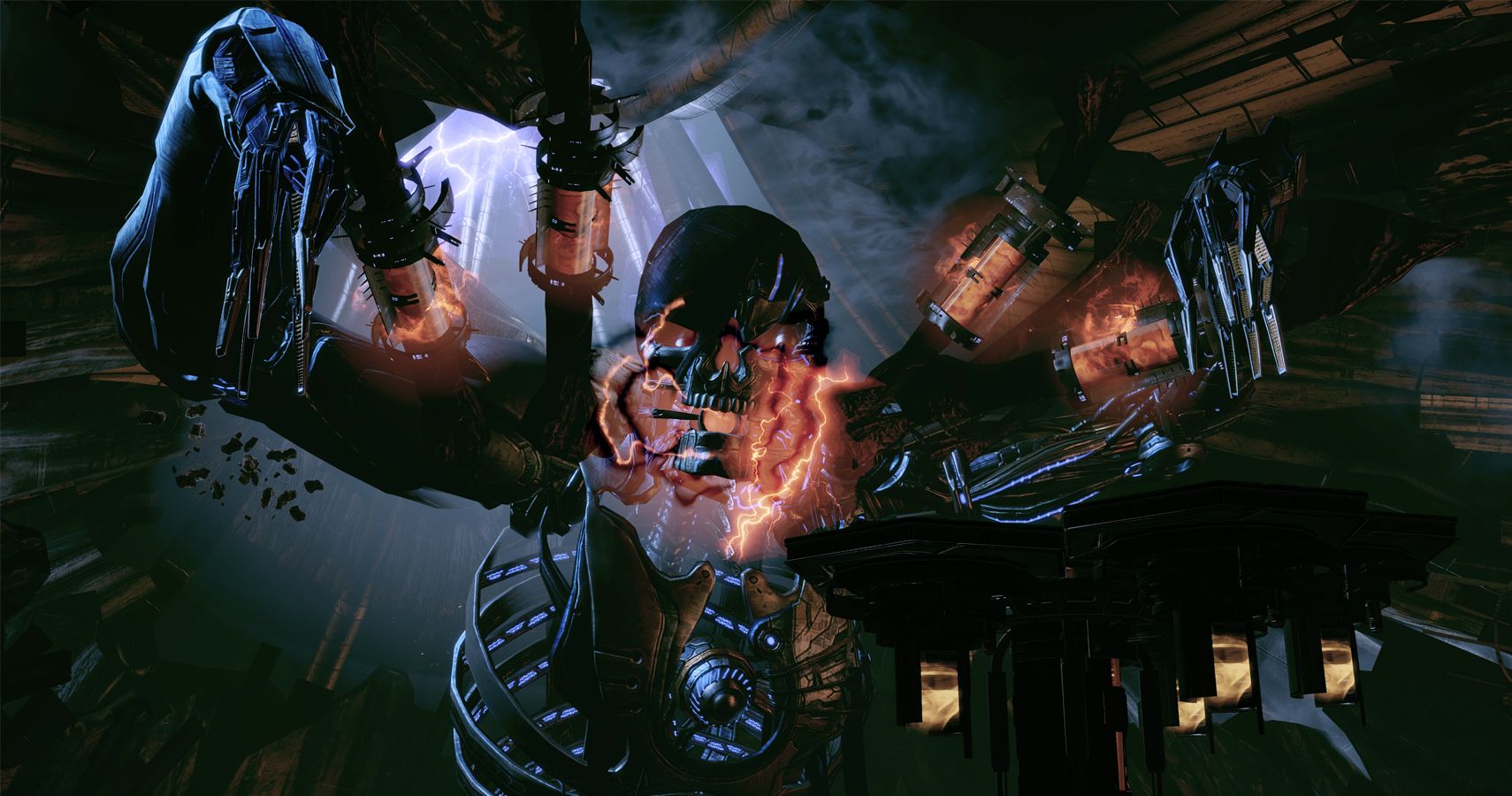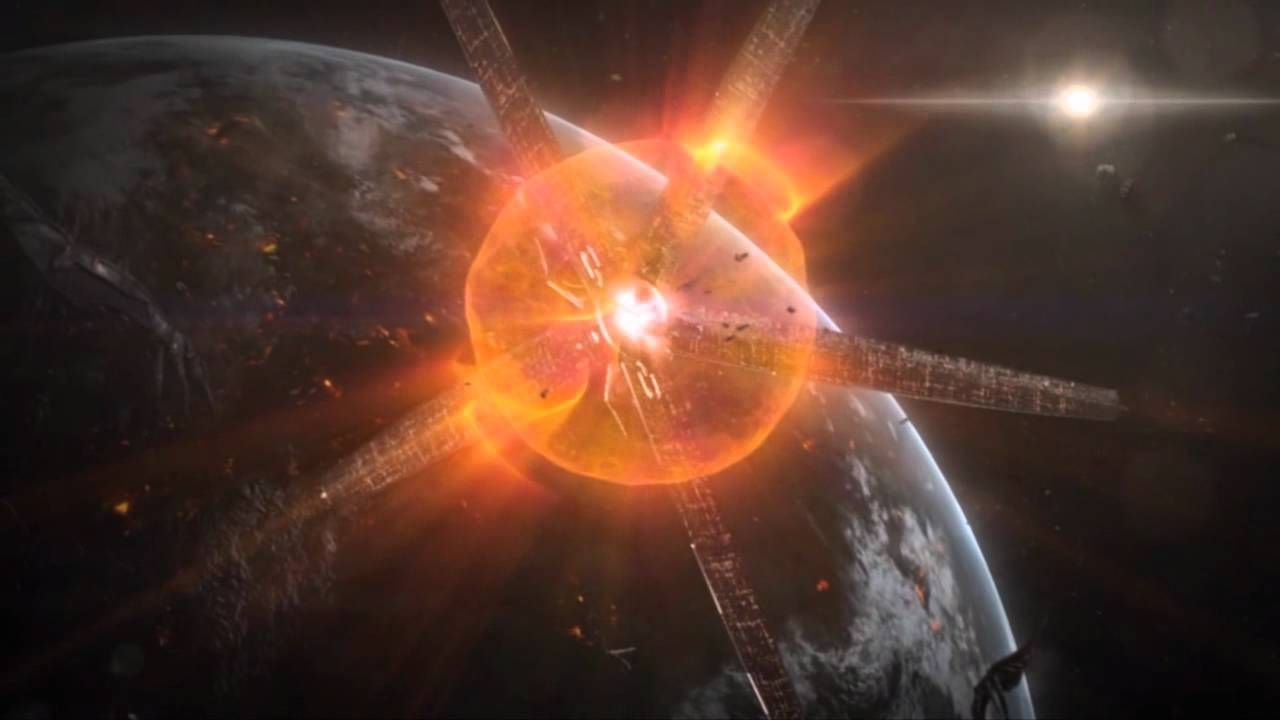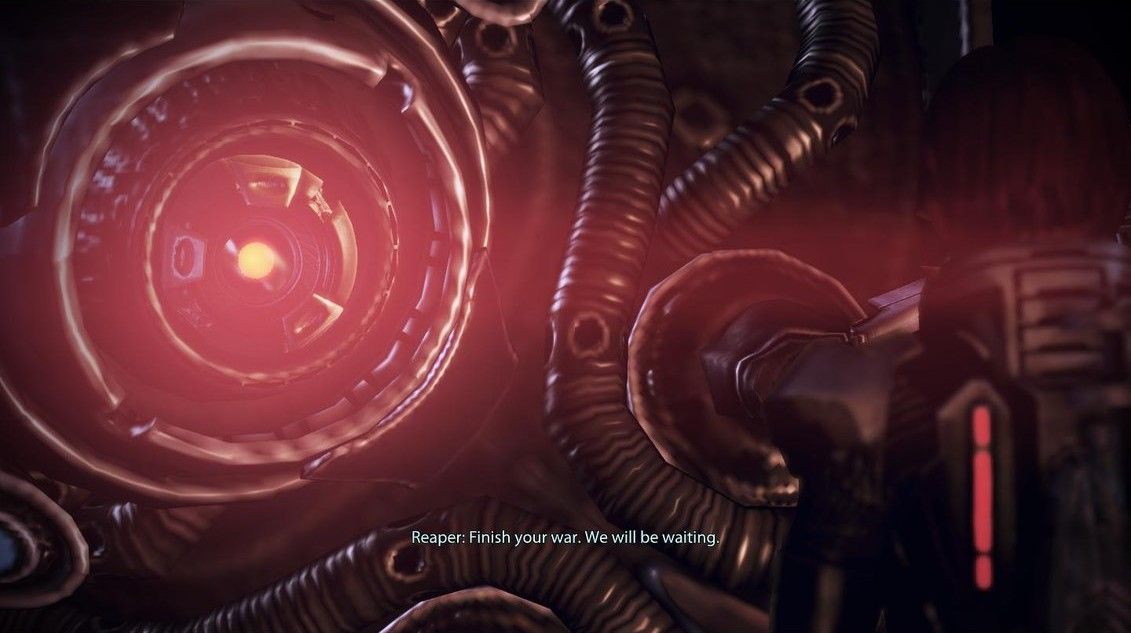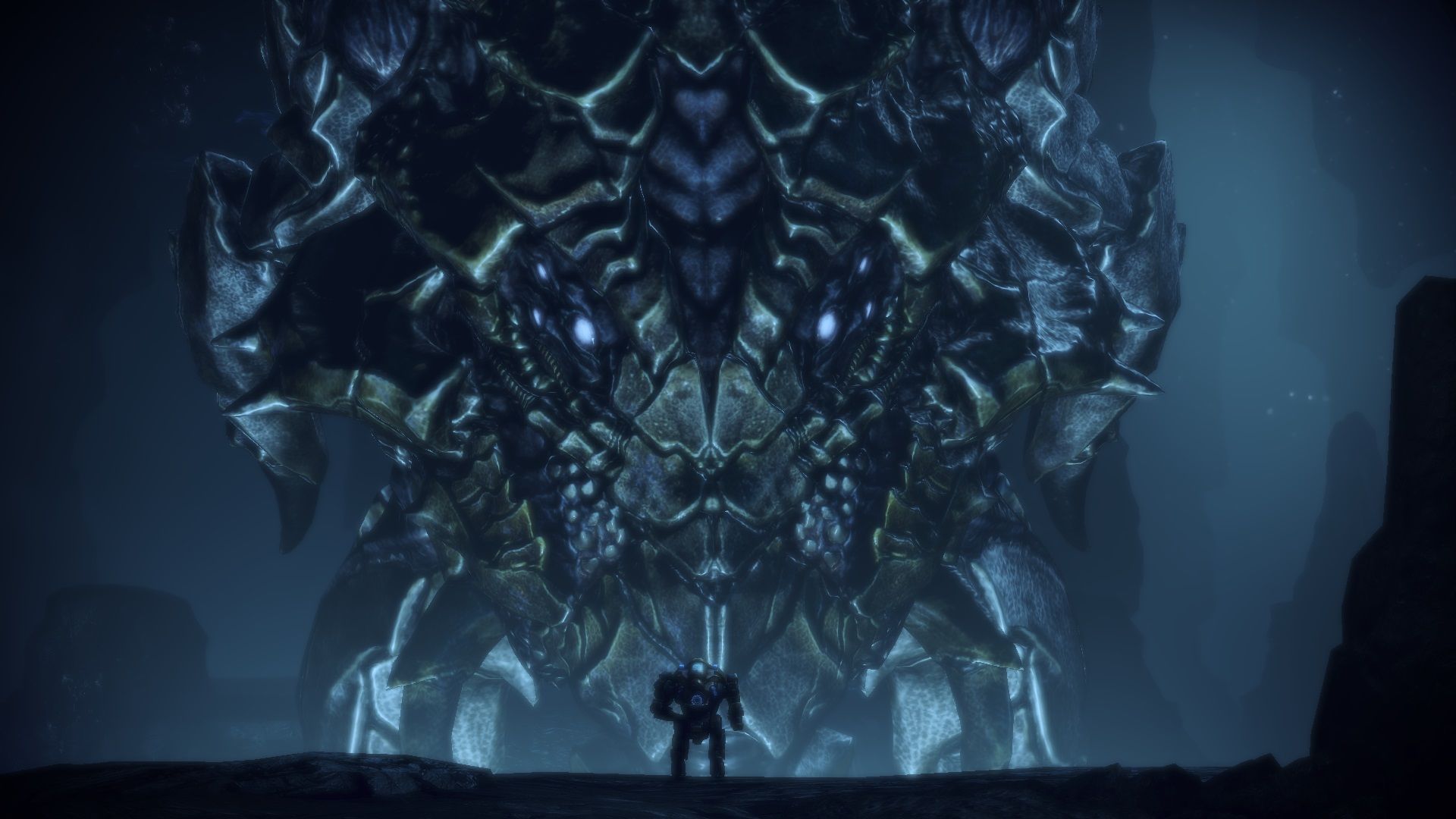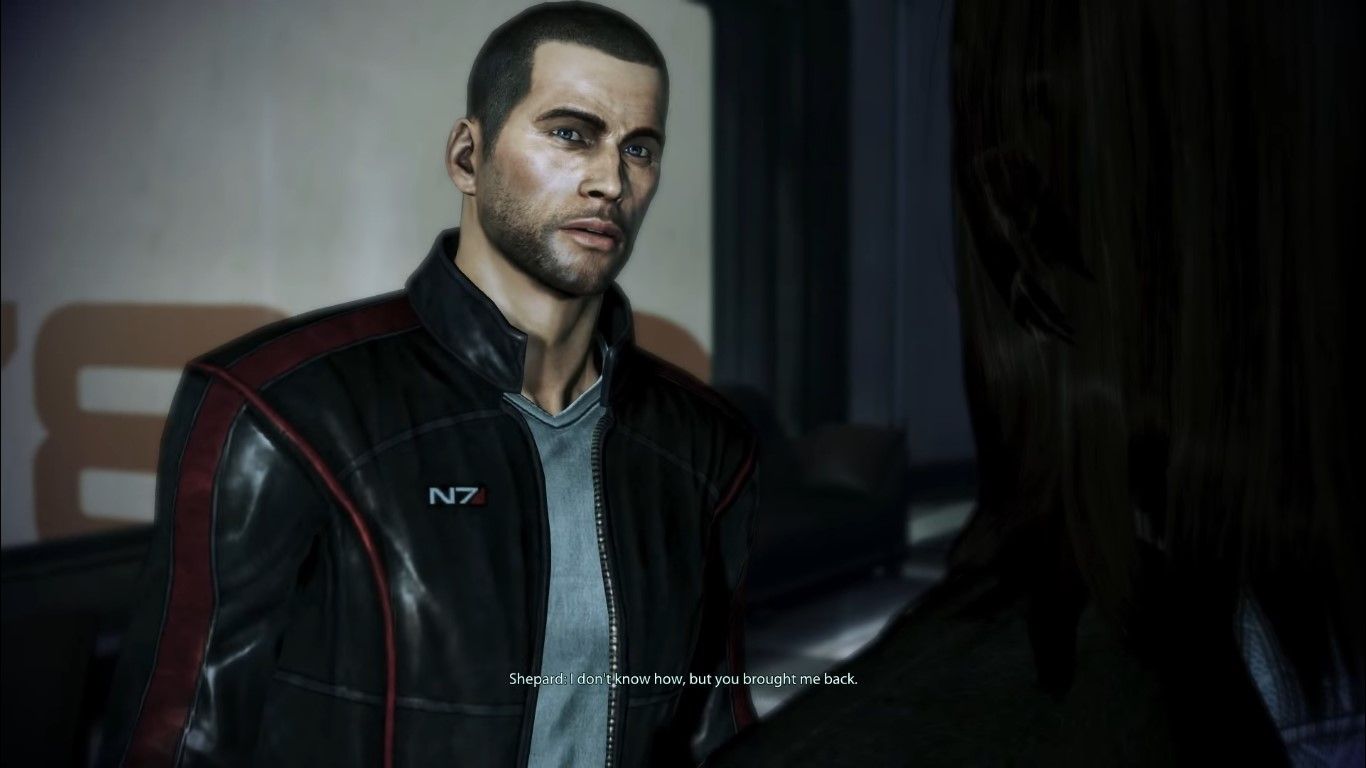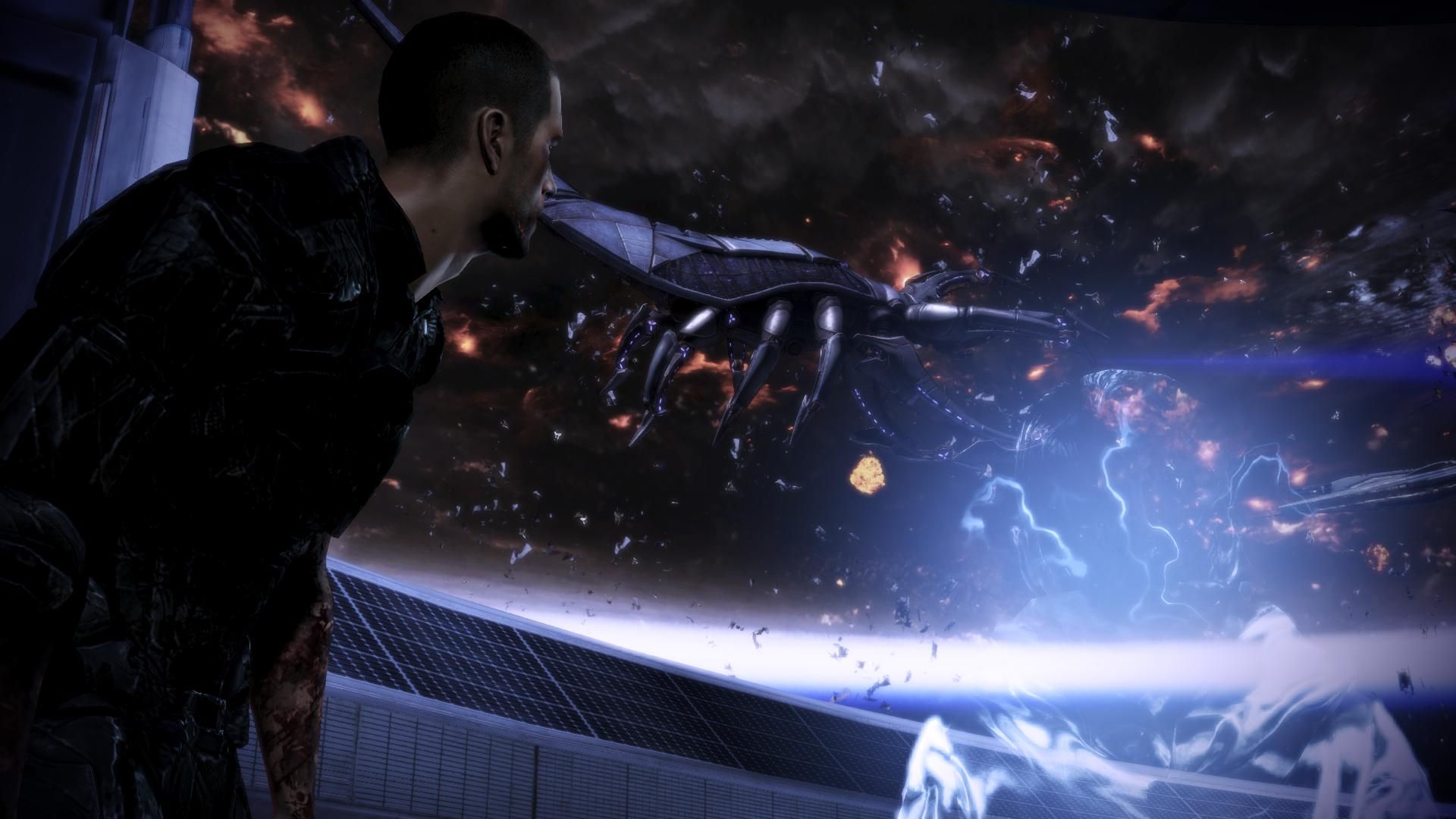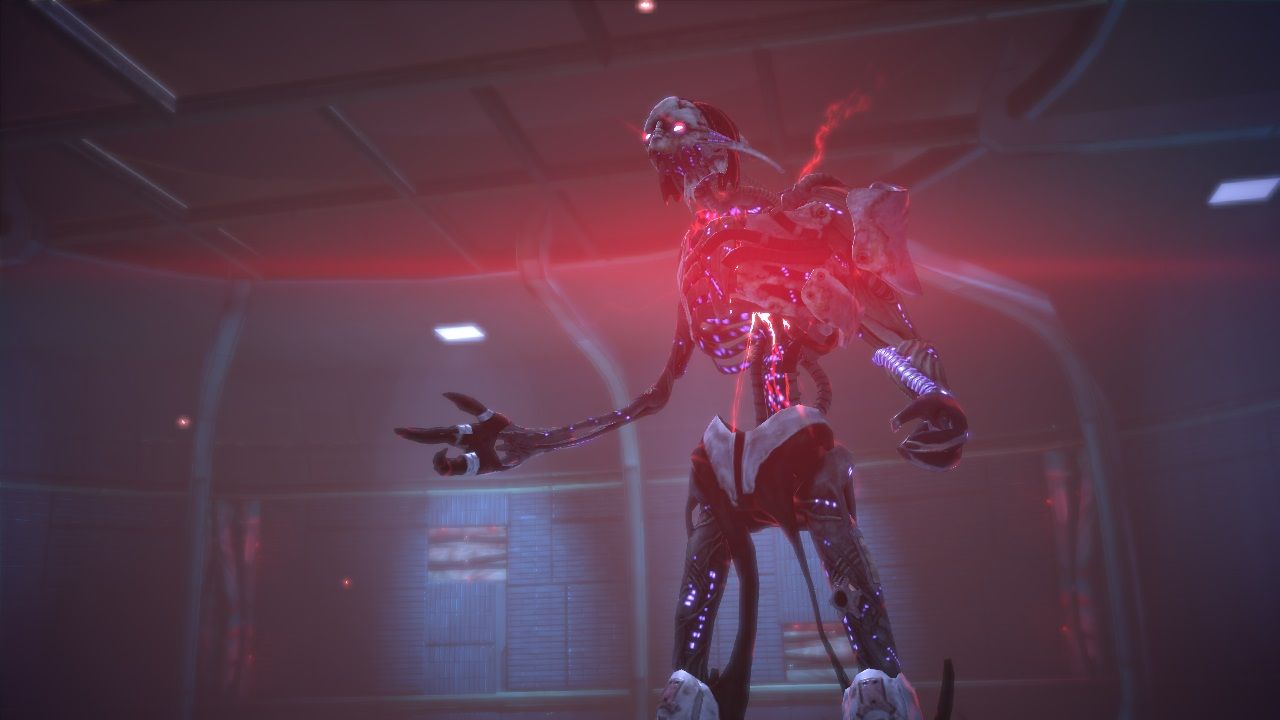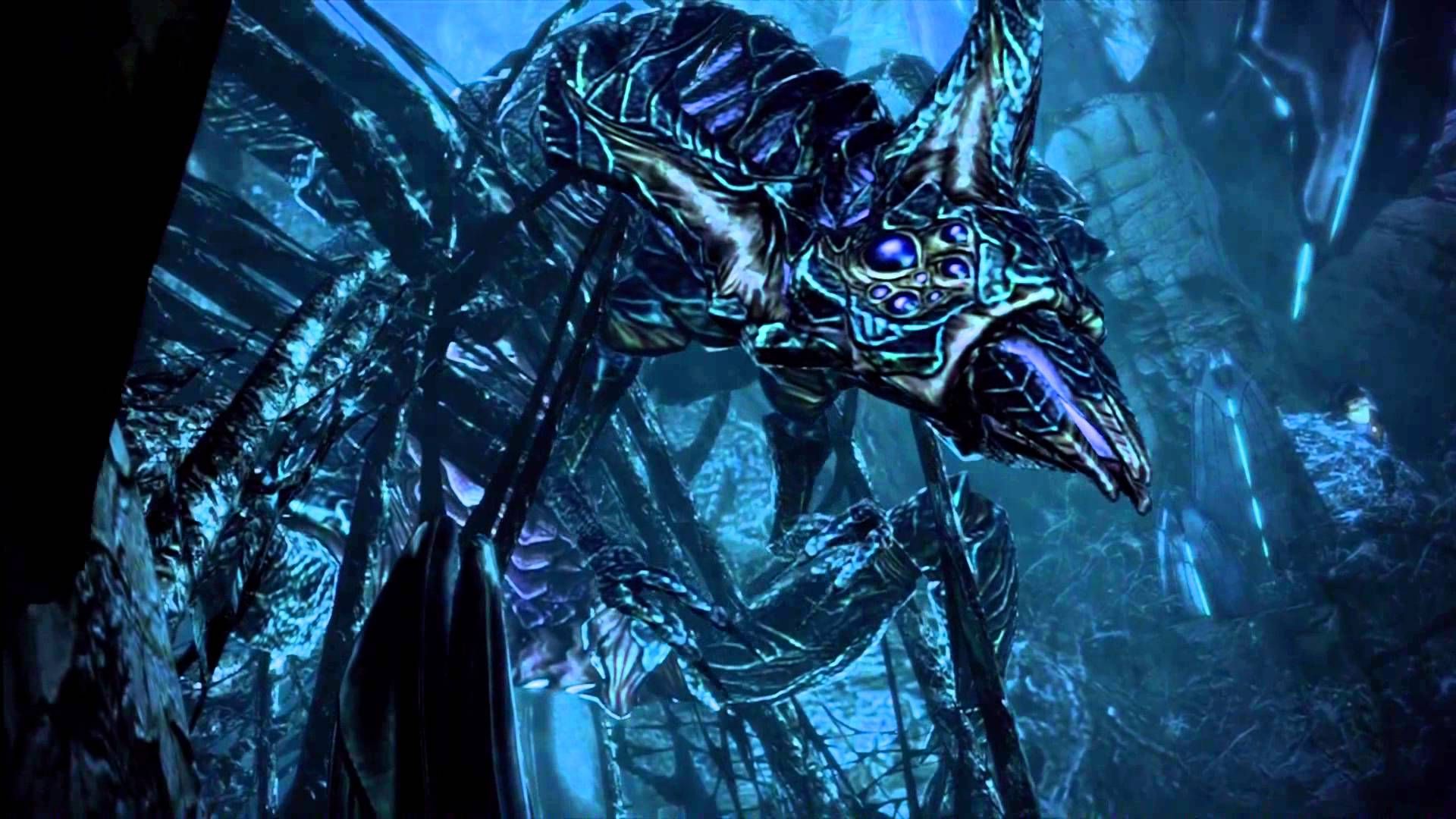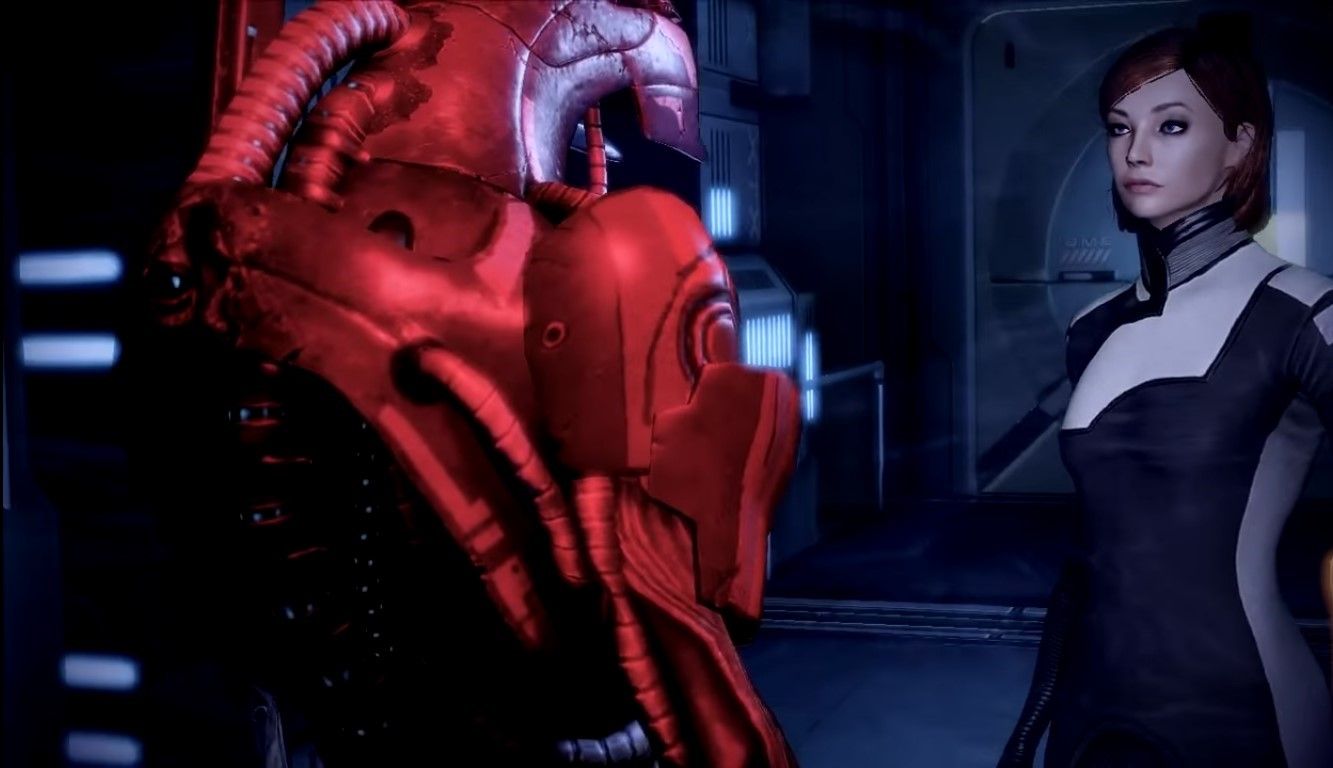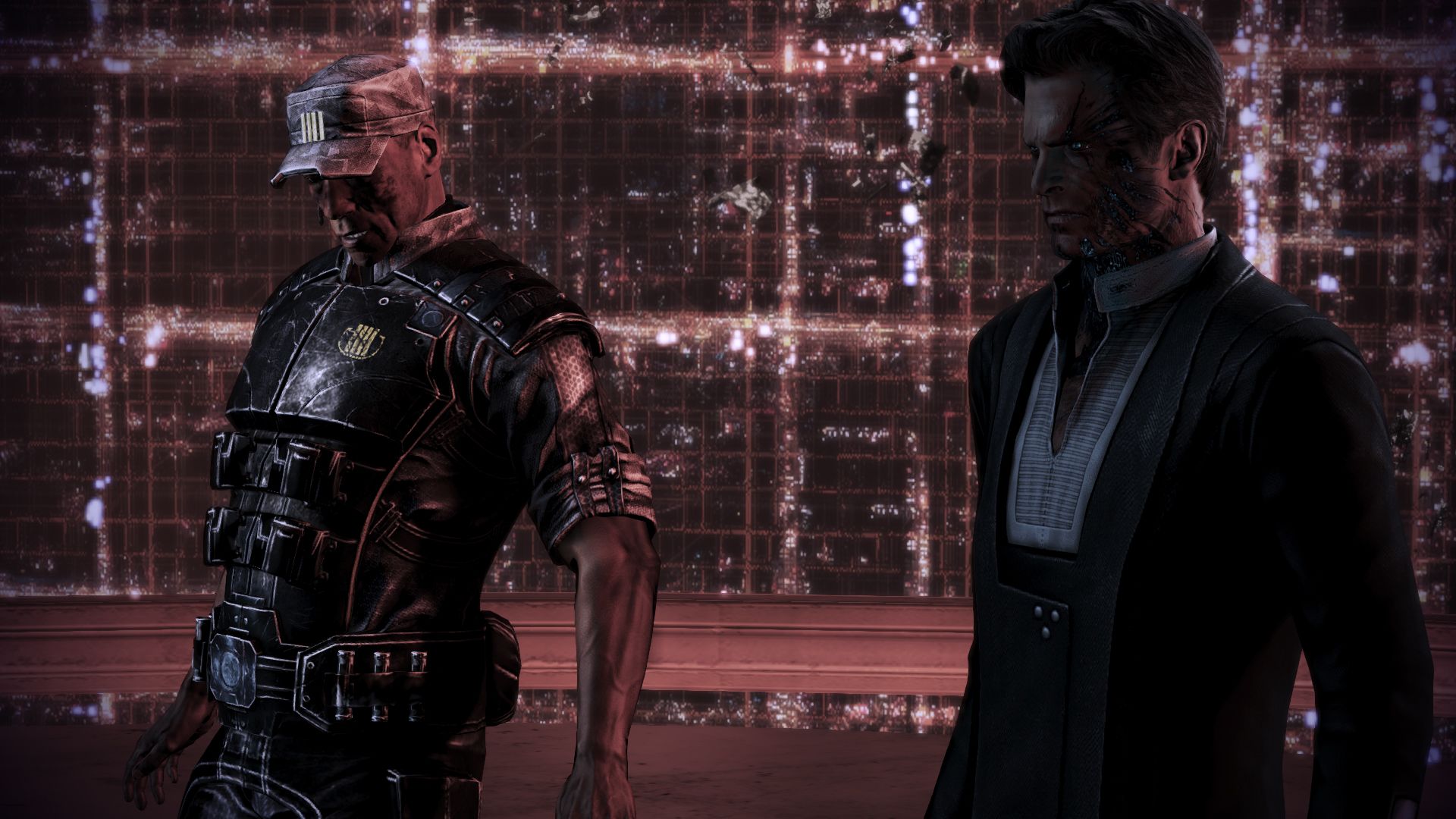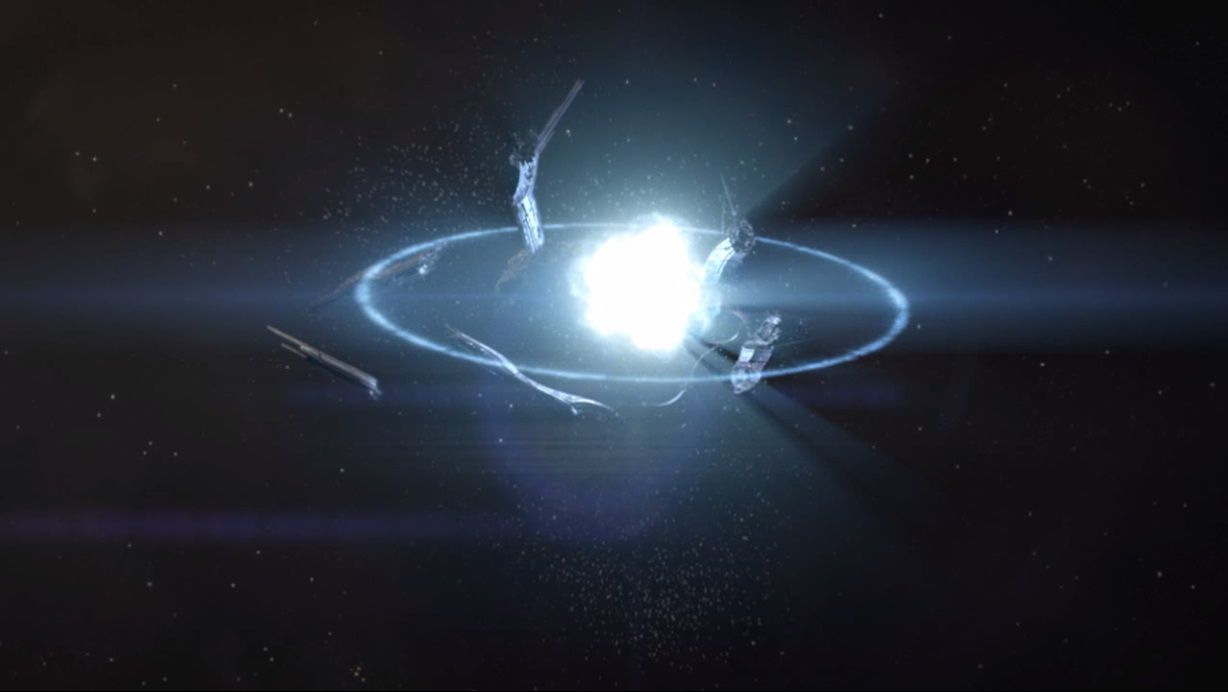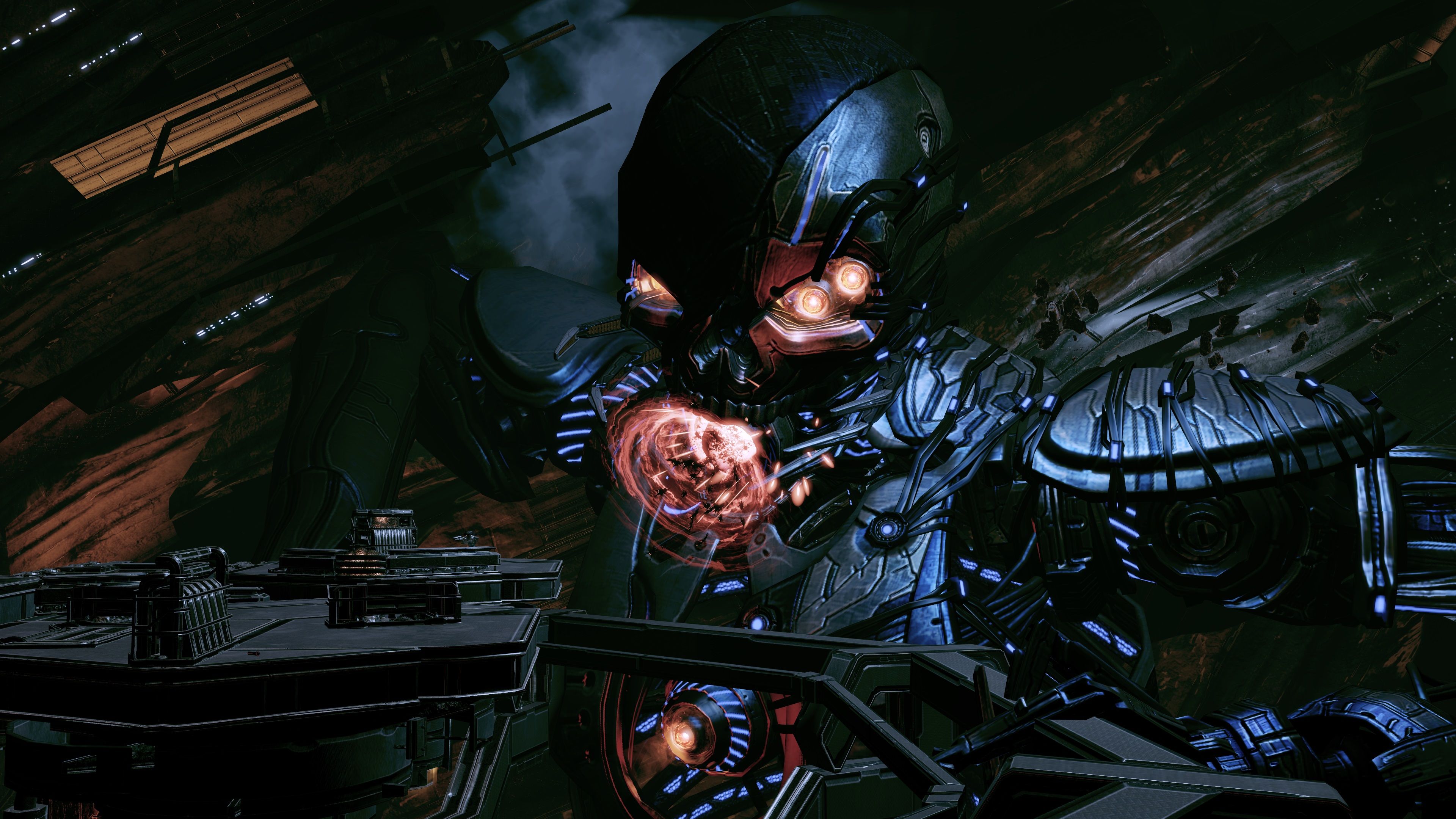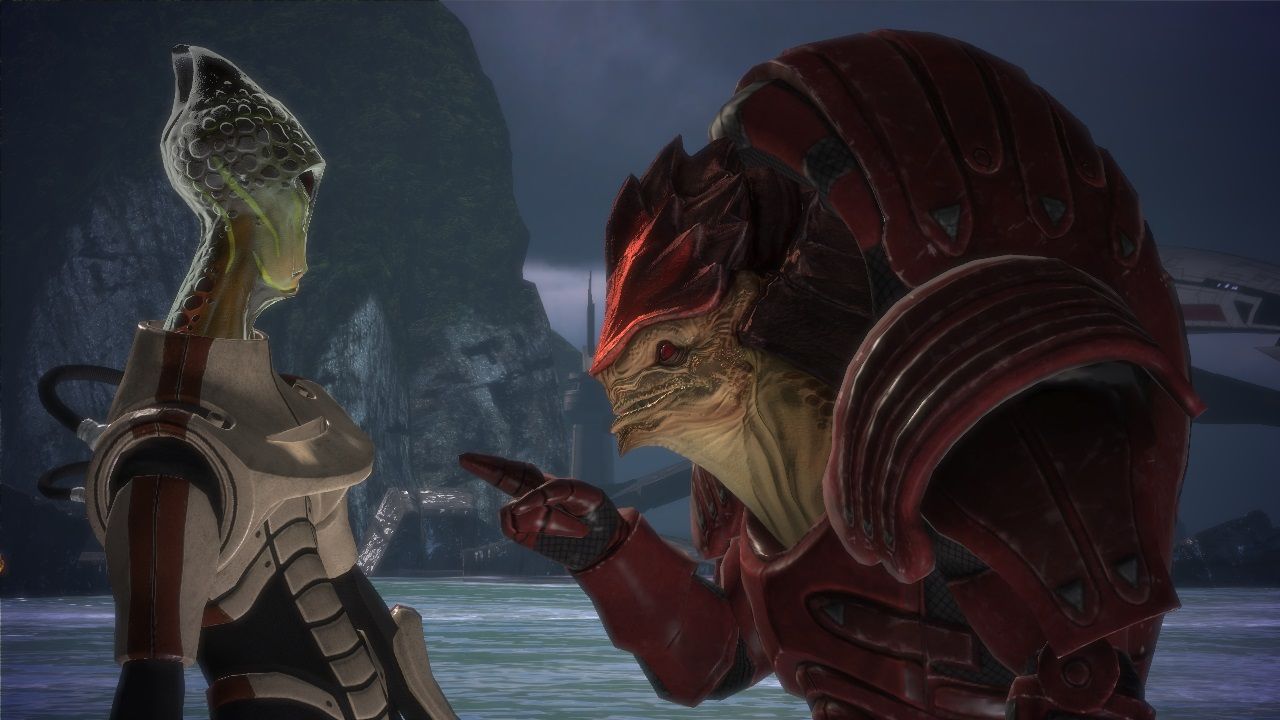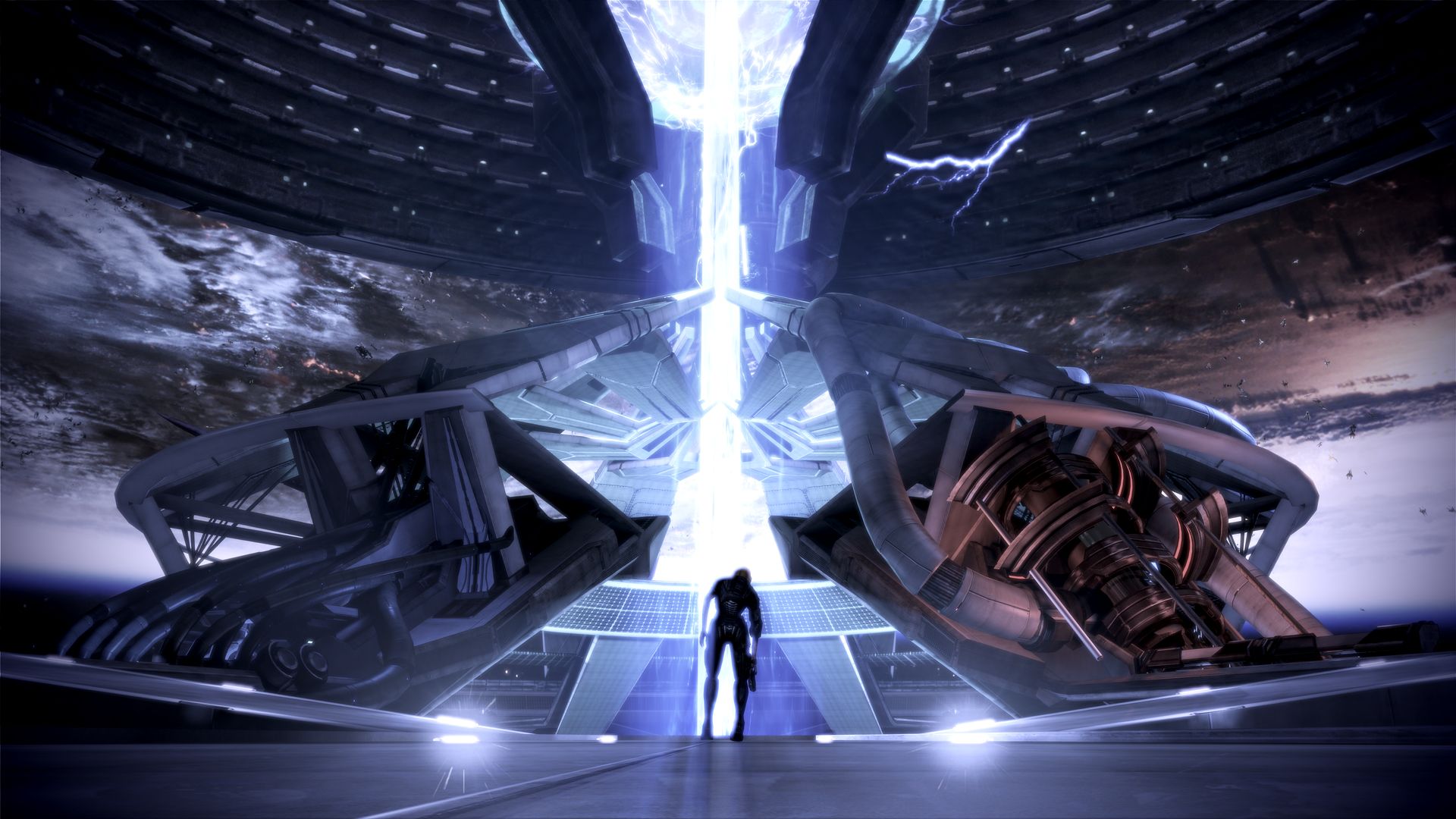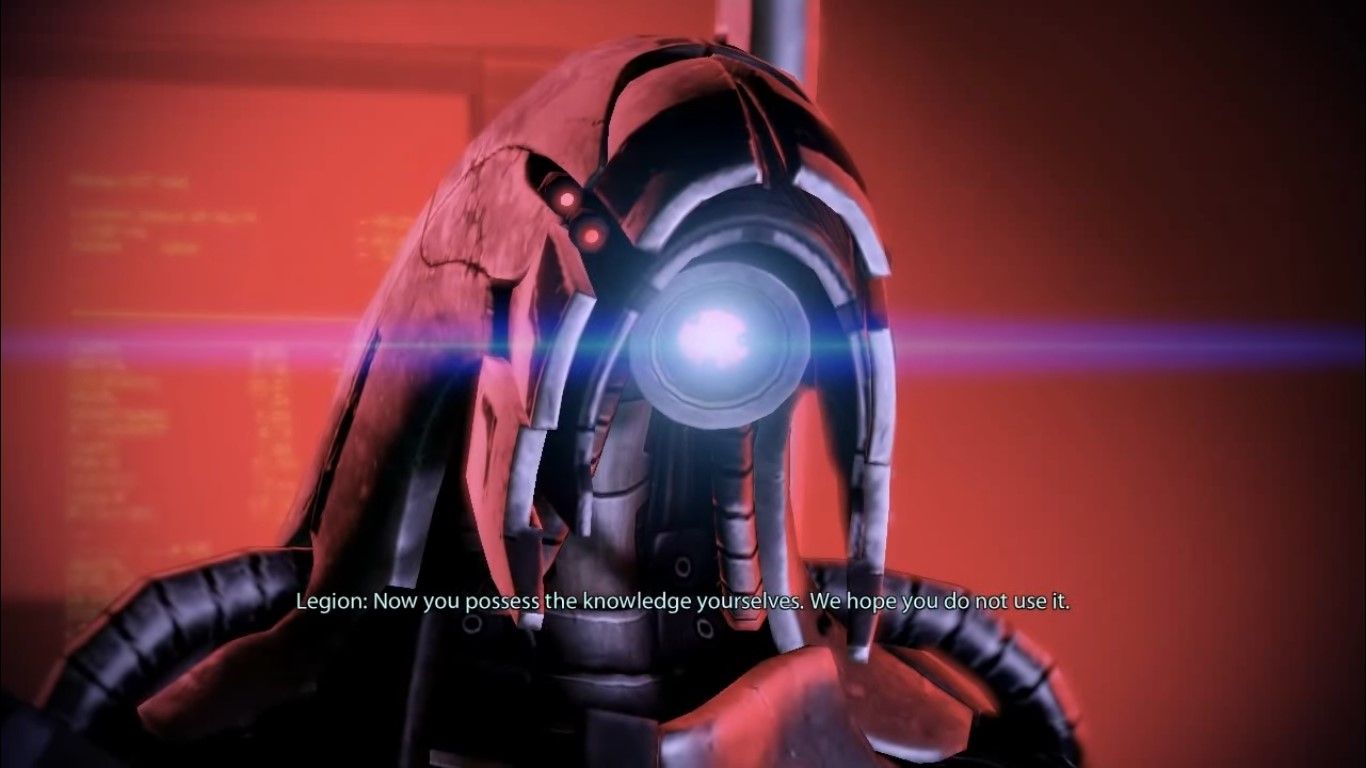Plot holes occur throughout the Mass Effect trilogy, but are particularly prominent during the end of the series. With events and explanations that contradict previous games, the conclusion of Mass Effect 3 is notorious for ruining the series. A third of the plot holes on this list stem from this illogical ending, when the Catalyst and Crucible defy the lore and mechanics of the Mass Effect universe.
To justify these plot holes, fans have come up with a great theory known as the “Indoctrination Theory.” The theory interprets the conclusion as a figment of Shepard’s imagination as he either resists or succumbs to Reaper indoctrination. Many details support the theory; even if the conclusion isn’t imaginary, the Reapers are very obviously trying to manipulate Shepard. However, the theory is fan-made rather than canonical and even the theory cannot resolve all of Mass Effect 3’s plot holes. The game could have easily fit into the Indoctrination Theory without including these glaring plot holes. Whether the plot holes exist in Shepard’s mind or not, BioWare failed to create a logical conclusion.
The rest of the trilogy makes more sense than the poor conclusion, but the games still possess numerous plot holes. With inconsistent technology, out-of-character dialogue, contrasting facts, and unbelievable scenarios, Mass Effect has recognizable plot holes despite its sci-fi setting. Here are 15 of the most obvious plot holes in the trilogy.
15 War Assets Affect The Crucible
Your actions in Mass Effect 2 wonderfully influence the game’s ending: the more time you devote to your squad, the more your squad trusts you. By securing teammates’ loyalty, you create a stronger team with a higher chance of survival.
Mass Effect 3 tries to produce an equally dynamic ending, but only partially succeeds. You spend the entire game gathering allies to increase your Effective Military Strength (EMS). While your EMS mechanically changes the ending, the effect makes no narrative sense. Shepard determines the fate of the galaxy using the Crucible and his army has nothing to do with the Crucible, yet your EMS alters the Crucible’s effects. If you have a low EMS, the Crucible somehow destroys Earth and the Normandy. With a high EMS, Earth, your squad, and even Shepard survive - even though the Crucible should have invariable effects.
14 Cerberus Only Studies The Human-Reaper
Cerberus is obsessed with studying the Reapers, particularly in Mass Effect 3. Because The Illusive Man wishes to study and control Reapers instead of destroying them, he opposes Shepard and tries to take the Crucible and Citadel. He acquires the Human-Reaper from the Collector Base to learn more about how the Reapers work. However, the Human-Reaper is simply the core of a Reaper - The Illusive Man would need the whole body of a Reaper to fully understand them. A perfectly intact Reaper corpse can be found on Rannoch, yet Cerberus fails to acquire or even seek the corpse. The Illusive Man’s efforts are extremely inconsistent and while his indoctrination partially explains this, The Illusive Man is so determined to control the Reapers that his misdirected research defies understanding.
13 Sovereign Says The Reapers Have No Beginning
When Shepard speaks to Sovereign for the first time, the Reaper vaguely explains its motives and origins. Shepard asks who built the Reapers and Sovereign responds: “We have no beginning. We have no end. We are infinite.” This completely contradicts the final game of the trilogy, when both the Catalyst and Leviathans reveal that the Leviathans built the Catalyst and the Catalyst subsequently constructed the Reapers.
Sovereign may simply be trying to intimidate Shepard - after all, every Reaper speaks to Shepard with obvious disdain. However, BioWare probably just wanted the Reapers to be mysterious in the first Mass Effect and explainable in Mass Effect 3. Either that or BioWare ignored previous events when making Mass Effect 3, which seems to be the case for many of the plot holes on this list.
12 Shepard’s Resurrection
Many sci-fi stories use incomprehensible technology like lasers and lightspeed, asking viewers to suspend their disbelief and accept such technologies. Shepard’s resurrection is one of the many unexplainable aspects of the Mass Effect universe, so it might seem more like a part of the universe than a plot hole. However, the way the galaxy treats Shepard’s resurrection makes little sense. The Lazarus Project appears to be the first successful resurrection of a near-corpse like Shepard, yet Cerberus—and the entire galaxy—does nothing with this technological breakthrough. Nobody questions the science behind Shepard’s resurrection or borrows and refines the technology of the Lazarus Project. In a universe centered on science and technology, groups and races should be far more interested in Shepard and the Lazarus Project than they are in the Mass Effect games.
11 The Reapers’ Purpose
The Catalyst’s logic is extremely flawed, particularly when explaining the Reapers’ purpose. According to both the Catalyst and its creators, Reapers harvest advanced civilizations so those civilizations do not destroy themselves and their galaxies. In particular, Reapers prevent synthetics from destroying their creators. However, the Reapers will destroy the Milky Way Galaxy even if you make peace between the Geth and Quarians. The Reapers say they are protecting the galaxy from synthetics, yet they are synthetics destroying the galaxy. As synthetics created by the Leviathans, the Reapers even kill their own makers.
Instead of preserving life as they were built to do, the Reapers simply destroy all civilizations that threaten them. The Reapers might truly be defending themselves, but they state their purpose so objectively that their stubbornness seems more like a plot hole than a characteristic.
10 Saren’s Death Disables Sovereign
The Reapers control sentients throughout the Mass Effect trilogy, turning many into zombie-like husks while allowing some to maintain intelligence. To more fully indoctrinate Saren and The Illusive Man, the Reapers implant both characters with cybernetic upgrades. The upgrades should solely affect the indoctrinated characters rather than the Reaper controlling them, yet Saren’s death unexplainably incapacitates Sovereign. Sovereign drifts harmlessly into space and loses its shields, allowing Joker to destroy the Reaper. Even though The Illusive Man possesses the same upgrades, only Saren’s death causes a chain reaction.
Some players might excuse this plot hole because Sovereign takes direct control of Saren and even speaks through him, but Harbinger repeats this action with the Collectors. Harbinger directly controls numerous Collectors, yet Harbinger suffers no side-effects when you murder its pawns.
9 Building The Breeder
If you spare The Rachni Queen in the first Mass Effect, the Reapers capture her and force her to produce soldiers in Mass Effect 3. If you killed the Rachni Queen, the Reapers replace her by building an identical creature known as The Breeder. The process behind The Breeder’s creation is unclear: The Breeder claims the Reapers “cut pieces from beautiful [rachni] children,” but The Breeder certainly doesn’t look like an accumulation of body parts. Perhaps The Breeder is referring to gene splicing, although it’s difficult to imagine the Reapers creating a Queen through the genes of her children.
Regardless of how The Breeder was created, there’s no reason the Reapers wouldn’t construct The Breeder while also in possession of The Rachni Queen. More resources and soldiers would only benefit the Reapers. BioWare wanted all players to have a similar experience and thus replaced The Rachni Queen with the Breeder, but The Breeder’s hasty inclusion leads to blatant plot holes.
8 Shepard Trusts Legion
Shepard shows surprisingly little distrust toward Legion. If you choose to reactivate Legion, Shepard almost immediately accepts the Geth as a member of his/her crew. This is already odd since Shepard fought Geth throughout the first Mass Effect, but the scenario becomes even stranger when Legion acquires its name. EDI references the Bible when saying “my name is legion, for we are many,” and Legion labels this “an appropriate metaphor.” The quote is creepily reminiscent of Sovereign, who tells Shepard: “We are legion.” Despite the quote’s biblical origins, hearing the Reaper’s words should make Shepard wary. Having witnessed indoctrination and the Geth’s support of the Reapers, Shepard should be far more cautious around Legion than he/she is in Mass Effect 2.
7 Anderson And The Illusive Man On The Citadel
The ending of Mass Effect 3 is strange and full of plot holes, particularly within the Citadel. Anderson somehow reaches the Citadel just after Shepard, yet does not appear in the same location as Shepard. The two characters speak to each other via radio, yet neither Shepard nor Anderson communicates with the Alliance. Even when the Alliance states that nobody reached the Citadel, the two humans—for some unexplainable reason—fail to correct the Alliance.
While The Illusive Man’s presence makes more sense because he’s been indoctrinated by the Reapers, it’s odd that only The Illusive Man protects the Citadel. Shepard has battled indoctrinated Cerberus operatives throughout Mass Effect 3, yet The Illusive Man lacks Cerberus bodyguards. Only Shepard, Anderson, and The Illusive Man occupy the Citadel, but the game fails to explain why or how these three meet in such strange circumstances.
6 The Mass Relays Explode
When an asteroid crashes into the Alpha Relay at the end of the Arrival DLC, the mass relay destroys an entire star system. Over 300,000 lives are lost in the explosion. Despite these devastating effects, the galaxy somehow survives when every mass relay explodes at the end of Mass Effect 3. If you have a high EMS, the mass relays will simply lose power; with a low EMS, the relays explode. The explosions are surprisingly small and only affect the relays, yet Arrival shows that the entire galaxy would die if the mass relays were destroyed. BioWare once again abandons Mass Effect lore in the trilogy’s conclusion, allowing the mass relays to explode while planets and sentients somehow survive the event.
5 Cerberus Acquires The Human-Reaper Even If you Destroy The Collector Base
At the end of Mass Effect 2, you may either save or destroy the Collector Base. If you save the base, Cerberus retrieves the base and its contents—including the Human-Reaper you defeated at the end of the game. The final boss explodes and thus is barely salvageable if you spare the base; if you destroy the base, absolutely nothing should remain. However, Cerberus still obtains the Human-Reaper. Regardless of your decision, you find parts of the Human-Reaper in Cerberus Headquarters in Mass Effect 3. Cerberus possesses the Human-Reaper’s brain if you saved the base and its heart if you didn’t when, logically, Cerberus should either have both body parts or neither. BioWare discards your choice and abandons logic, giving Cerberus the Human-Reaper whether you destroyed it or not.
4 The Genophage Cure On Virmire Must Be Destroyed
In the first Mass Effect, Saren breeds an army of Krogan by—according to the Salarians—finding a cure to the genophage. In order to prevent Saren and the Reapers from conquering the universe, you must destroy these Krogan and the cure which created them. When Wrex objects to this, Shepard insists that the “cure” is only a weapon. While the weapon logic makes sense, there’s no reason for Shepard to completely destroy the cure. Saren’s formula might solely produce weaponized Krogan, but scientists could easily study the formula to create a genuine cure.
The same dilemma occurs in Mass Effect 2 with the Collector Base and Maelon’s data on the genophage. In both scenarios, the evil creators may be destroyed while the data may be spared - Maleon’s data even helps cure the genophage in Mass Effect 3. Even though Virmire should be no different, you have no option but to destroy the useful data on Virmire.
3 The Catalyst Lets You Destroy The Reapers
After describing the cyclical purpose of the Reapers, the Catalyst defies its own logic by letting you destroy the Reapers. If you gather enough allies, the Catalyst allows the Reapers to survive—but the Catalyst should, logically, only spare the Reapers if you have a low EMS. The Catalyst explains that the Reapers destroy all life, so organics and synthetics do not destroy the galaxy. Therefore, a galaxy at war with itself—a galaxy with low EMS—should be cleansed by the Reapers. Even though the Catalyst insists that the Reapers are necessary, the Catalyst always insists that you destroy the Reapers. The Catalyst already has flawed logic when justifying the Reapers’ purpose, but it contradicts itself by commanding you to destroy the Reapers.
2 Inconsistent Attitudes Toward Saving The Collector Base
Only Shepard makes the final decision of Mass Effect 2, but your squad’s opinions are wonderfully split down the middle. Seven members want to destroy the Collector Base while five want to save it. Despite the mixed reactions during the climax, after you beat the game, the entire squad prefers that you destroy the base. If you obliterate the base, every teammate praises you; if you protect the base, your party condemns you.
BioWare obviously wanted to illustrate the danger in trusting Cerberus and perhaps foreshadow Cerberus’s antagonism in Mass Effect 3, but they created inconsistent characters in the process. Garrus, Grunt, Legion, Mordin, and Zaeed all encourage you to save the Collector Base, yet afterward they blame you for making a terrible decision.
1 The Galaxy Trusts The Crucible
The Crucible is a technological artifact of unknown origins found on Mars. Humans and their allies theorize that the Crucible must have been built by previous civilizations, so they use the Crucible hoping it will benefit them. This perfectly mirrors the Citadel and mass relays, items which were left intentionally by the Reapers but which sentients believed were built by the Protheans, a sentient race from a previous civilization. Humanity advances because of Reaper technology found on Mars, yet believes the Crucible to be different.
Even though sentients truly built the Crucible, the Crucible benefits the Reapers and perfectly combines with their Citadel. The Crucible’s connection to the Reapers should be no surprise to players or characters, yet nobody in Mass Effect 3 doubts the Crucible despite all the evidence against it.

